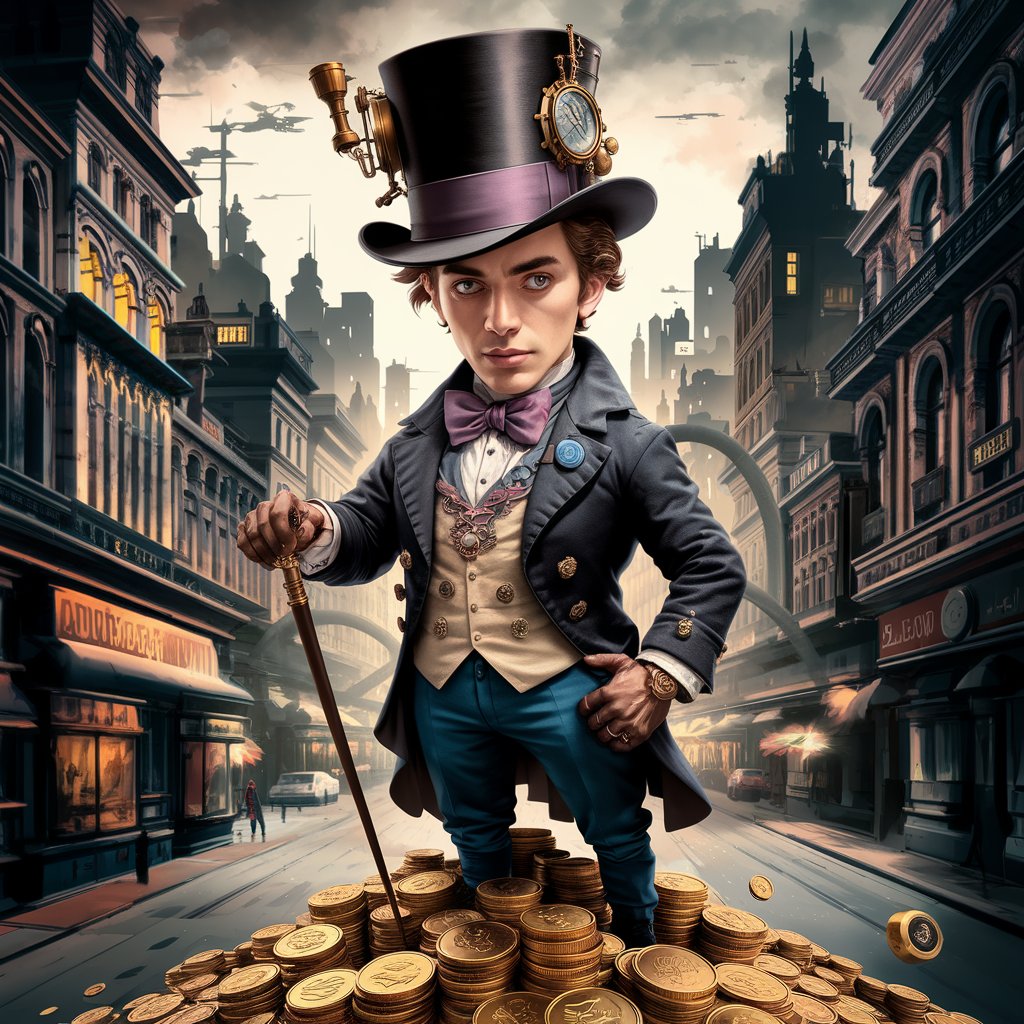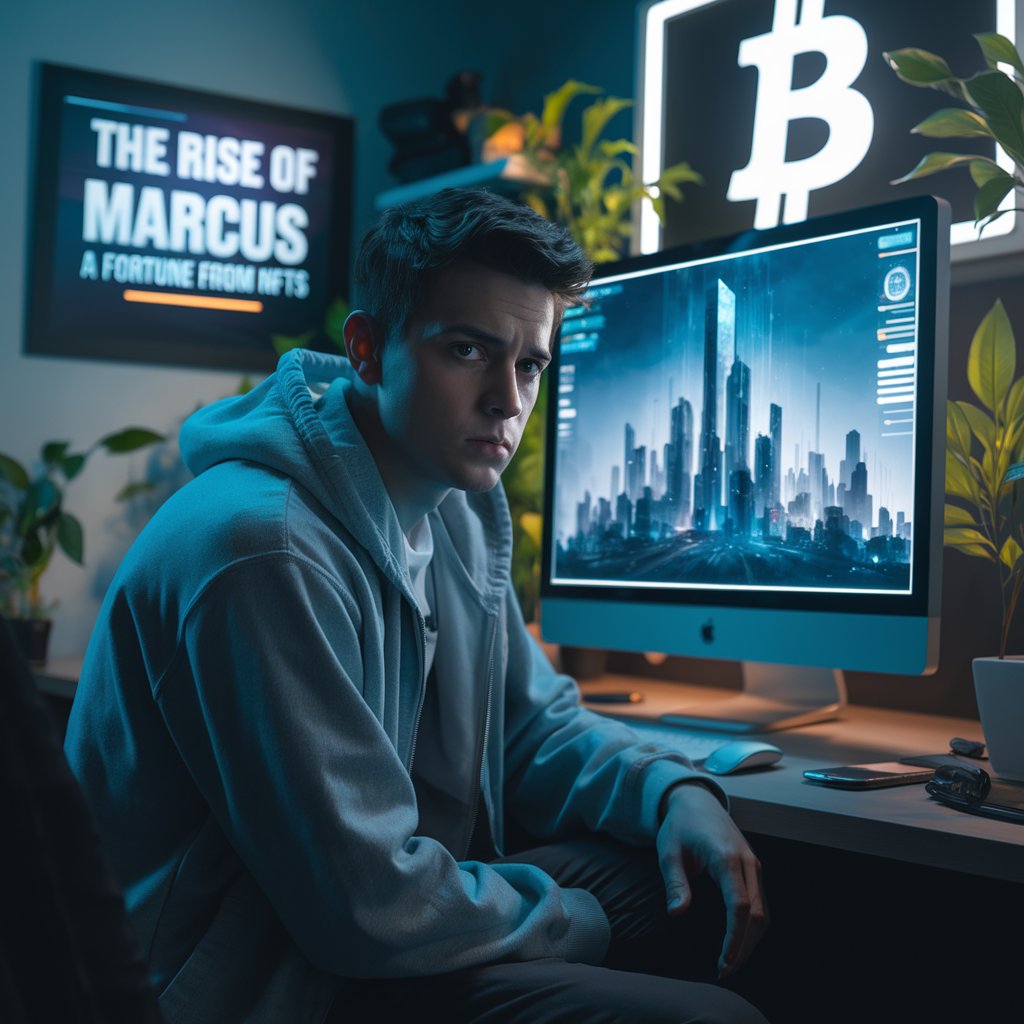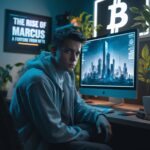
Marcus Harper was an ordinary guy living in a small, bustling city. He worked a regular 9-to-5 job as a graphic designer at a local advertising agency. Though he was good at his job, he felt his creativity was stifled. The projects were mundane, and his talent was underappreciated. He often dreamed of finding a way to unleash his full artistic potential and be his own boss, but he had no idea how to make it happen.
One evening, Marcus was scrolling through social media when he stumbled upon a post about NFTs—non-fungible tokens. At first, he had no clue what they were, but the more he read, the more intrigued he became. NFTs were digital assets that could represent anything from artwork to music to virtual real estate, and they were selling for mind-boggling sums. Artists were minting their work as NFTs and selling them for thousands, even millions of dollars.
Marcus felt a spark of excitement. This could be his chance to break free from the monotony of his job and truly express himself. But he didn’t know where to start. He spent the next few weeks diving deep into the world of blockchain technology, NFTs, and cryptocurrency. He watched countless YouTube tutorials, read blogs, and even joined a few online communities where artists and collectors gathered to discuss the booming digital art scene.
The Leap of Faith
After gathering enough knowledge, Marcus decided it was time to take a leap of faith. He poured all his creativity into designing a collection of digital artwork he called “The Cyber Dreamscapes.” Each piece was a vivid, surreal image that explored the intersection between humanity and technology. He used his skills to craft intricate, visually stunning designs that were unlike anything he had seen in the NFT market.
But creating the art was only half the battle. Marcus still had to mint his pieces as NFTs, which required an initial investment to cover the gas fees—transaction fees on the Ethereum blockchain. He used most of his savings, a risky move, but he was determined. He carefully selected a platform to list his collection and set a price that he thought was reasonable, hoping to attract buyers.
Days turned into weeks, and Marcus anxiously checked his listings every day. Initially, there was no activity. He started to doubt his decision, questioning whether he had made a huge mistake. But he kept engaging with the online community, sharing his work on social media, and networking with other artists and collectors.
The Breakthrough
One night, when Marcus was about to give up hope, he received a notification on his phone. Someone had purchased one of his NFTs! It wasn’t a massive sale, but it was a start. He felt a rush of excitement. Someone out there saw value in his work, and that was all the motivation he needed.
In the days that followed, more and more sales trickled in. Word spread about “The Cyber Dreamscapes,” and collectors started taking an interest. Marcus realized that he had to do more than just create great art; he had to tell a story. He began adding narratives to each piece, explaining the inspiration behind the surreal images. People resonated with his vision, and soon his NFTs were selling out within hours of being listed.
One day, a well-known collector named Ethan Jansen, who had a reputation for spotting emerging artists, bought five of Marcus’s pieces in one go. Ethan shared his purchase on social media, and suddenly, Marcus’s work was being talked about by major influencers in the NFT community. His online following exploded overnight, and his inbox was flooded with messages from potential buyers, collaborators, and even media outlets wanting to interview him.
A Fortunate Series of Events
The sudden exposure changed everything. Marcus was no longer just another artist trying to make it in the NFT world; he was now a rising star. His next collection, “Digital Ethereal,” was a runaway success, selling out within minutes of launch. Collectors were bidding against each other, driving up the prices, and Marcus could hardly believe what was happening.
He continued to innovate, experimenting with 3D animations, soundscapes, and interactive elements. One of his pieces, “The Infinite Loop,” was a mesmerizing, looping animation that created a hypnotic effect. It became his most famous work, selling at auction for 20 Ether (about $60,000 at the time). The sale was covered by major tech and art blogs, further cementing his status as a major player in the NFT space.
By now, Marcus was earning more in a week than he had in an entire year at his old job. He had made enough money to quit his 9-to-5, and he did so with a sense of liberation he had never felt before. His life had completely transformed in less than a year. He moved into a new apartment, set up a home studio, and even started his own digital art company.
Building a Legacy
Marcus wasn’t content with just making a fortune; he wanted to build something lasting. He began using his platform to support other artists, collaborating with emerging talents and helping them navigate the complex world of NFTs. He launched an online gallery called “MetaVision,” where he showcased not just his work but also the art of lesser-known creators. The gallery became a hub for digital art enthusiasts, and Marcus’s reputation grew as a pioneer who was shaping the future of the NFT art scene.
He also started exploring other applications of NFTs, like virtual real estate and digital wearables. Marcus invested in virtual worlds, where users could buy land, build galleries, and host virtual events. He partnered with a developer to create a virtual exhibition of “The Cyber Dreamscapes,” where visitors could walk through a digital environment and experience his art in a whole new way. The exhibition was a hit, attracting thousands of visitors from around the world.
The Roller Coaster Ride
But the journey wasn’t without its challenges. The NFT market was volatile, and there were times when it felt like the bubble could burst at any moment. Prices fluctuated wildly, and the community was divided between those who saw NFTs as a revolutionary new medium and those who dismissed them as a fad. Marcus faced criticism from traditional art circles, who argued that digital art could never replace physical paintings. But he stood by his vision, believing that NFTs were not just about making money but about redefining what art could be in a digital age.
During a market downturn, Marcus saw a significant drop in sales, and he realized that he needed to diversify his income streams. He began creating limited-edition physical prints of his NFTs, which he sold to fans who still appreciated tangible art. He also released a series of instructional videos on how to create and mint NFTs, tapping into the growing demand for knowledge in the field.
A New Beginning
Despite the ups and downs, Marcus had made his fortune, but more importantly, he had found a way to express himself creatively without limits. He was no longer just a graphic designer at a desk job; he was an artist, an entrepreneur, and a mentor to others. His story was featured in magazines, podcasts, and even a documentary about the rise of NFTs.
Looking back, Marcus realized that his success was not just a result of luck but also of hard work, perseverance, and a willingness to take risks. He had dared to enter an uncharted territory, to invest in himself and his passion, and it had paid off in ways he had never imagined.
As he stood in his studio, surrounded by screens displaying his latest creations, Marcus felt a sense of fulfillment that no amount of money could buy. He had found his place in the world, and he was ready to keep pushing the boundaries of what was possible in the digital art space.
Conclusion
Marcus’s journey from a regular 9-to-5 job to a successful NFT artist was a testament to the power of believing in oneself. He had taken a concept that was still in its infancy and turned it into a thriving career. Through ups and downs, he kept learning, evolving, and adapting, which allowed him not just to survive but to thrive in a competitive market. And in the end, his story wasn’t just about making money; it was about finding freedom, expression, and a new way to connect with the world through art.










